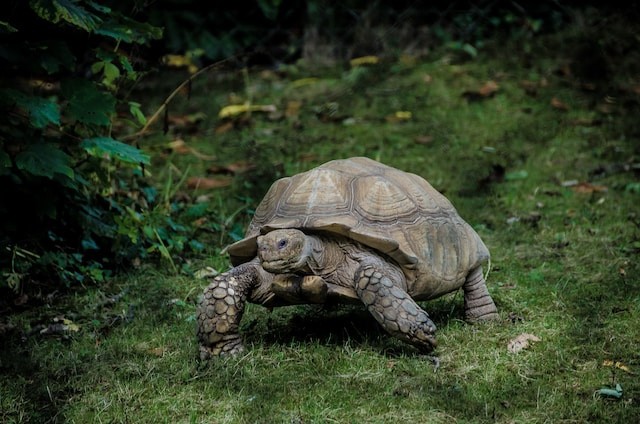Nuclear contamination is a serious environmental and health problem that affects many areas of the world.
Measuring and monitoring the extent and impact of nuclear contamination can be challenging, especially in remote or inaccessible locations.
Fortunately, scientists have discovered a new way to study nuclear contamination using tortoise and turtle shells.
These animals belong to the order of reptiles called chelonians, which have bony outer shells that are usually made of keratin, the same protein that forms human hair and nails.
The shells grow in layers, each representing one year of the animal's life.
By analyzing the uranium content and isotopic composition of these layers, scientists can determine when and where the animal was exposed to nuclear contamination.
Tortoise Shells Record Nuclear Contamination

Uranium is a naturally occurring element that can be found in rocks, soil, and water.
Some uranium isotopes are artificially produced by nuclear fission, the process of splitting atoms to release energy.
These isotopes have different atomic masses and decay rates than natural uranium, and can be used to identify the source and age of nuclear contamination.
Uranium-235 is used as fuel in nuclear reactors and weapons, while uranium-238 is a byproduct of nuclear fission that has a longer half-life.
Scientists have found that chelonians can bioaccumulate uranium from their environment or food sources, such as algae or plants.
This means that they can store uranium in their tissues or shells at higher concentrations than their surroundings.
The uranium isotopes in their shells can reflect the historical changes in nuclear contamination over time.
If a tortoise lived in an area that was affected by a nuclear test or accident, its shell would show a spike in uranium-235 or other artificial isotopes during that period.
To test this method, scientists analyzed the shells of five different chelonians from natural history collections. They used a technique called laser ablation-inductively coupled plasma-mass spectrometry (LA-ICP-MS) to measure the uranium content and isotopic composition of each layer of the shells.
They also compared the results with historical records of nuclear activities in the areas where the animals were collected.
Tortoise Shells Tell Us About Nuclear History
One of the chelonians they studied was a sea turtle from Enewetak Atoll in the Pacific Ocean.
This atoll was the site of 43 nuclear tests conducted by the United States between 1948 and 1958, including the first hydrogen bomb test in 1952.
The sea turtle was collected in 1978, 20 years after the last test.
The scientists found that its shell had elevated levels of uranium-235 and other artificial isotopes, indicating that it was exposed to nuclear contamination from the tests or from legacy contamination in the atoll.
Another chelonian they studied was an eastern box turtle from Oak Ridge, Tennessee in the United States.
This city is home to a nuclear facility that has produced and processed uranium since 1943. The box turtle was collected in 1962, during the peak of nuclear production and testing.
The scientists found that its shell had high levels of uranium-238 and other byproducts of nuclear fission, indicating that it was exposed to nuclear contamination from uranium waste products in the area.
The other three chelonians they studied were from areas that were not directly affected by nuclear activities, but still showed traces of artificial uranium isotopes in their shells.
These were a gopher tortoise from Florida, a pancake tortoise from Tanzania3, and a radiated tortoise from Madagascar.
The scientists suggested that these animals might have been exposed to global fallout from atmospheric nuclear tests conducted by various countries between 1945 and 1980.
They concluded that tortoise and turtle shells can be used as a new tool to trace nuclear history in different regions and time periods.
According to the study, this method can be applied to other animals with keratinized structures, such as horns, hooves, or feathers.
© 2025 NatureWorldNews.com All rights reserved. Do not reproduce without permission.





